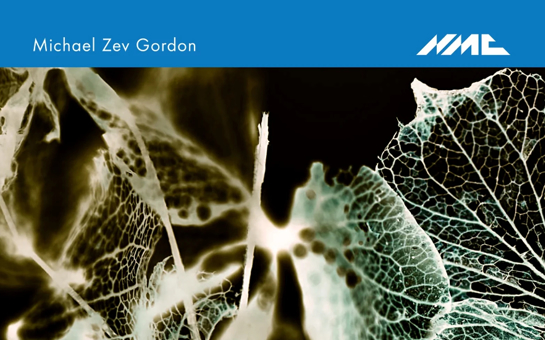- Michael Zev Gordon
Violin Concerto (2017)
- Cadenza Music (World)
Commissioned by the BBC
- 1+pic.1+ca.2+bcl.2/3221/3perc/hp.cel/str
- 24 min
Programme Note
I. Very Still, Intense; Moderato
II. Spacious, Still; Lightly Dancing
III. Spacious; Gently Flowing; Always Simple
My concerto is in a conventional three-movement form. However, the standard formal pattern of fast–slow–fast is replaced by moderato–fast–slow; the second movement flows straight into the third; and the first two movements open with similar material, which will surface again in the final one.
Reshaping convention like this comes from wanting to write music that is connected to the familiar and traditional, but which also embraces the less familiar and contemporary. In this way, I hope to widen my means of expression, and also to create fresh musical relationships. So, tonal sonorities rub up against, or elide with, more dissonant ones; simple rhythms, when superimposed, lead to poly-metric richness; harmonies progress but also circle; harmonic colours range from basic intervals to complex clusters.
In this concerto, these mixtures form a long-range, expressive journey – moving from struggle to release, a recurring narrative in my music. It begins with a simple, two note oscillating pattern in the solo violin. This music is stable and sweet, but also sounds strained because the soloist plays high up on the lowest string of the violin. The stability doesn’t last, and the main body of the movement is a striving flux of ideas – led by the soloist, increasingly echoed and amplified in the orchestra – which cannot settle. The second movement returns briefly to the quiet stability of the opening of the first, but it too quickly gives way to newly searching music. At first this is filled with rocking, repeating, even child-like patterns, emphasized by bright instrumental sonorities. But these sounds intensify and darken: the known leading to the less known.
At the end of the second movement, the earthy dance that has emerged lifts away into something more ethereal. However, before this can feel like real repose, the final movement cuts in with a fortissimo, minor triad in the strings. I hope, in this context, tonality takes on the element of surprise and rupture. Twice more, triads interrupt. But the third time, variants of the oscillating motif – first on the horns, then in the solo part – enter too, leading to an emotional climax and introspective solo violin cadenza. This releases, in turn, into a reprise of the two-note figure at its original pitch, answered by passages of gently intermingling orchestral lines. In the long, final settling, the soloist rises through the texture to reach the motif again, which reduces down to a single high A, insistent and repeating. At the very end, the work’s opening harmony reappears. For me it is something re-found and heard anew. But it floats away almost before it is fully registered.
The concerto was commissioned by the BBC and was first performed by Carolin Widmann and the BBC Symphony Orchestra conducted by Sakari Oramo at the Barbican concert hall, London, on 3 February 2017. When I worked initially with Carolin Widmann on the piece, we discussed how passionate she was about making the violin sing. It was inspiring to hear just how many nuances of singing she could bring to the instrument, intense and open, strained and fragile, passionate and vibrato-filled, delicate and almost innocent. I’ve tried to make the most of these different voices - to move from the habitual to paths less travelled, and, at the concerto’s close, from struggle to contemplation.
Programme note by Michael Zev Gordon
Media
Scores
Reviews
Discography
More Info

- The Impermanence of Things
- 15th April 2024
- Michael Zev Gordon's new portrait album out on April 19

 Located in the UK
Located in the UK
 Located in the USA
Located in the USA
 Located in Europe
Located in Europe